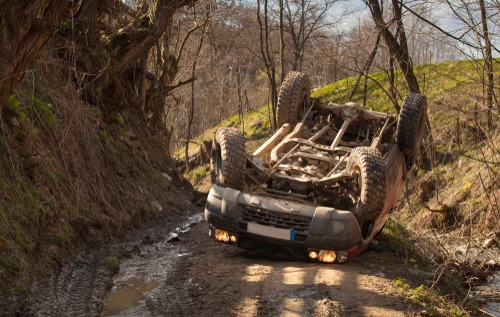
What Causes Rollovers? How Can You Prevent Them?
Product Liability
In a situation where you have been injured because of a car defect, you may have a product liability claim. Vehicles are supposed to be made with a standard of care in mind that the design keeps you safe in a variety of situations. If you have a car that tends to roll over easily, then how can you stay safe in a typical driving situation? This is where the product liability claim comes into play. All-terrain vehicles (ATVs) are most prone to rolling over, and this could be due to defects in the design or manufacturing.
How Do Rollovers Happen?
Any vehicle has the capability of rolling over, which is an alarming thought but one that people must keep in mind to use proper precautions and avoid it from happening if possible. However, not all rollover accidents can be avoided. Taller, narrower vehicles like SUVs and pickups are more susceptible to rolling. This is because they have a higher center of gravity and are more top-heavy than smaller vehicles. When a driver makes too sharp of a turn, a pendulum effect may occur, which leads to a loss of control and eventually a rollover.
95% of rollovers result from trips, according to the government. This is when a vehicle swerves into a curb, pothole, or a soft roadside shoulder. Sometimes a vehicle leans in a way that a tire’s sidewall deforms and the wheel rim strikes the pavement. This may provoke a tip-up. In this type of situation, the government counts this as a tripped rollover.
How Does One Prevent or Survive a Rollover?
It is important to stay aware of prevention and surviving a rollover. There are some ways in which this can become possible if you are involved in one, and it is beneficial to be aware of the safety tips. The rollover driver-death rate among newer passenger vehicles dropped from about 27 in the year 2000 to 6 in 2012. Common sense and maintenance are great ways to increase your odds of avoiding one of these unfortunate accidents and also walking away from one. Utilize these following tips:
- Wear Seatbelts: Belts will help you remain in your seat in the event of a crash, as to not toss you around so much. Half of the known rollover fatalities will occur when a person is partly or completely ejected from their vehicle. Nearly three-quarters of people ejected from a vehicle are killed.
- Check tires: It is important to take precaution and check that all tires are properly inflated to the recommended pressure by the vehicle manufacturer. Inflation pressure should be checked at least once a month.
- Watch Speed: Speed makes a vehicle’s chances of rolling over much more severe. About 40% of fatalities in rollover accidents involve using excessive speed.
New Rules in Roof-Crush
In 2009, a rule was instated that says that vehicles weighing 6,000 pounds or less must be able to withstand a force equal to three times their weight, applied alternatively to the left and right sides of the roof. The roof cannot legally bend so far that it would touch the head of a median-height-male test dummy. Heavier passenger vehicles that weighed between 6,000 and 10,000 pounds used to be exempt from this. However, now they are covered by the standard and need only withstand 1.5 times their own weight on the roof.
If you have been involved in an accident that led to a rollover, you may be able to hold a manufacturer liable in a product liability suit. In some cases, some vehicles have been made negligently to the point where they are actually more likely to rollover in an accident. You can see where you stand by speaking with an experienced attorney that you trust. Call today for a FREE consultation and case review.

















